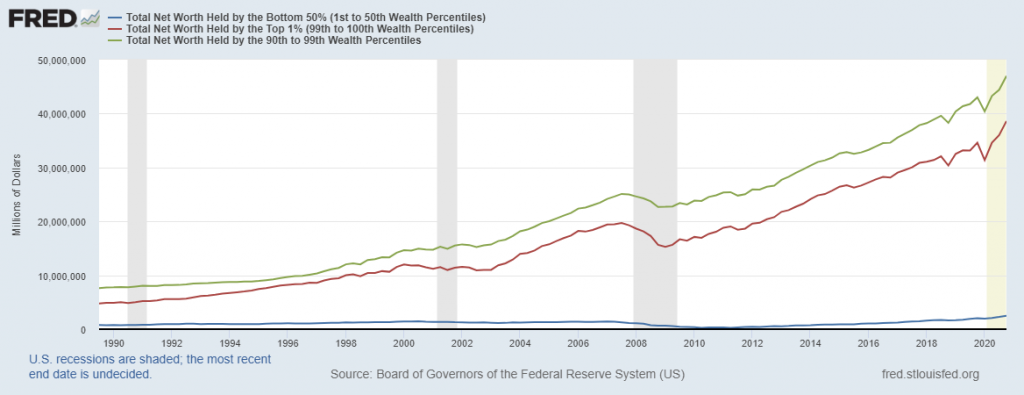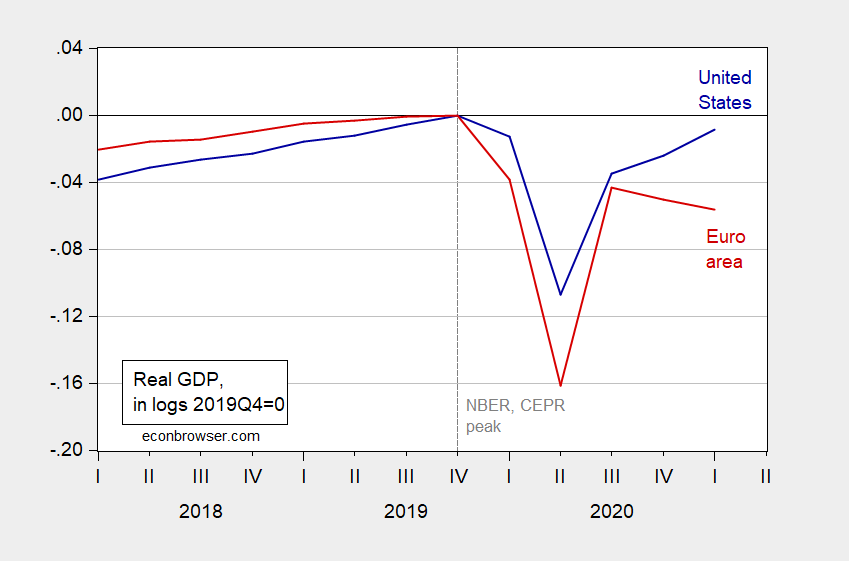Using an incredibly powerful device called “the Google”, I have discovered new prototype data releases regarding the distributional aspects of real personal income. Here are some figures depicting income accruing to select household income percentiles, contributions to income growth therefrom, and Gini coefficients. These figures are from this Working Paper entitled “Measuring Inequality in the National Accounts” (updated 2020).
Inomics: Top Economics Blogs – April 2021
From Inomics:
Business Cycle Indicators as of May 4th
Monthly GDP figures were released by IHS-Markit yesterday, showing a rebound in March. In the context of key macro indicators followed by the NBER Business Cycle Dating Committee:
Net Worth for Bottom 50% and Above
Diverging Fortunes: US and Euro Area GDP
Euro area GDP continues to drop in Q1, while the US recovery accelerates.
Figure 1: US real GDP (blue), Euro Area 19 real GDP (red), both in logs, 2019Q4=0. Source: BEA, European Union, and author’s calculations.
The US recovery has benefited from a tremendous amount of fiscal stimulus and — finally — a reasonable pandemic response (including an effective vaccination rollout).
The Composition of Consumption
While aggregate consumption has surpassed peak levels, it hasn’t returned to trend. Furthermore, the composition has changed drastically.
Economy looks strong
The Bureau of Economic Analysis announced today that seasonally adjusted U.S. real GDP grew at a 6.4% annual rate in the first quarter, well above the 3.1% average growth that the U.S. experienced over 1947-2019.
Nowcasts, Economic Indicators, Expectations
On the eve of the advance GDP release for Q1.
Five Year Inflation Breakevens
Accounting for term and liquidity premia can change the story.
Guest Contribution: “What Three Economists Taught Us About Currency Arrangements”
Today, we present a guest post written by Jeffrey Frankel, Harpel Professor at Harvard’s Kennedy School of Government, and formerly a member of the White House Council of Economic Advisers. A shorter version appeared at Project Syndicate.

